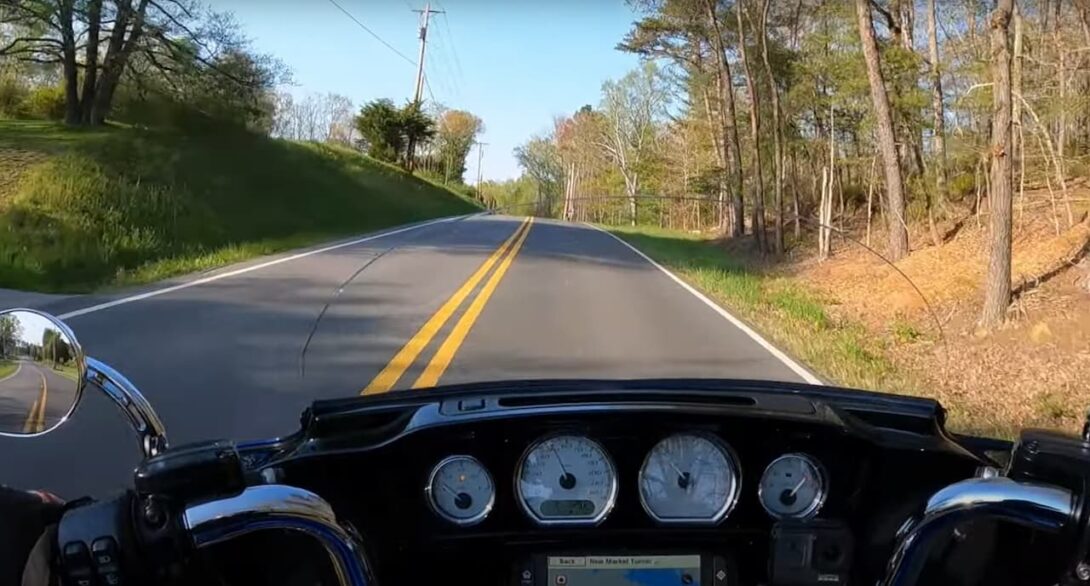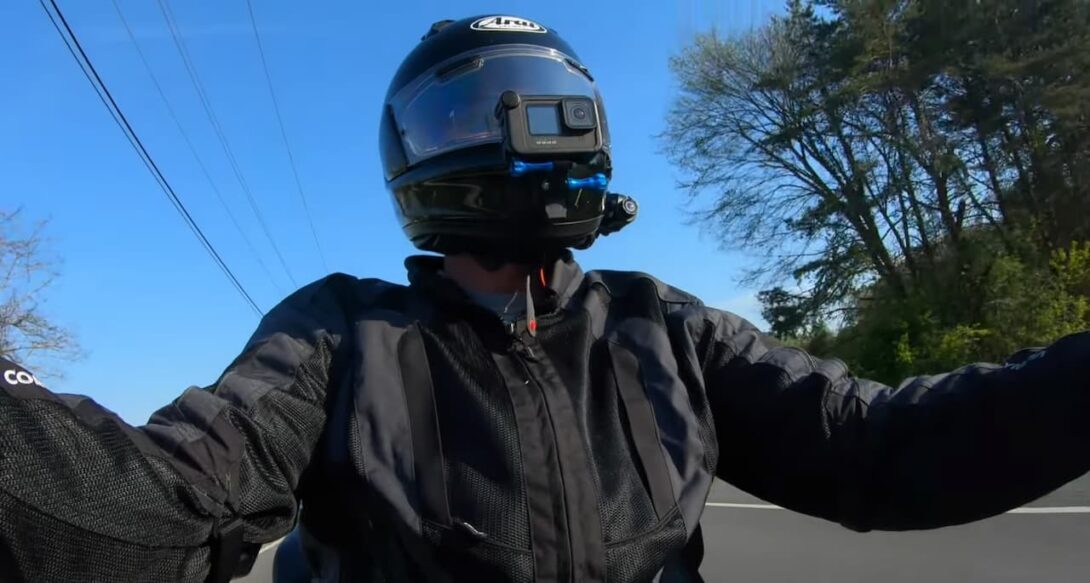Have you ever wondered why there are so many state and local laws regulating whether or not cyclists are needed to use headgear or helmets?
Whether you’re traveling across the country or relocating to a new state, you’ll want to familiarize yourself with the motorcycle helmet laws in each jurisdiction through which you pass.
The United States With Diverse Helmet Laws For Motorcycle Riders
In almost every state, riders and their passengers are required by law to use DOT-compliant helmets. New Mexico, Arizona, Colorado, Alaska, Hawaii, Indiana, Utah, and Maine require wearing headgear to protect motorcycle riders and their passengers who are between the ages of 18 and younger.
In certain jurisdictions – including New York and Florida – motorcyclists are obligated by law to use DOT-approved helmets without exception.
In American states like Nevada, Oregon, California, Maryland, Washington, and New York state, all motorcycle riders and their passengers of any age group ought to wear special helmets and headgear all the time when riding this type of vehicle.
Only a few American states do not demand motorcycle riders to use any head protection, regardless of the rider’s age or the vehicle’s type. Illinois, Iowa, and New Hampshire are among them. In these states, however, it is still advisable to use a helmet while riding but it is not obligatory.
Missouri is one of the states with a helmet law that applies to specific riders. Riders who are 25 years old and younger require helmets when operating a motorcycle on public roads in Missouri. The state’s universal helmet law was repealed in 1979, but lawmakers enacted the rider-specific law in 1992.
In Alaska, Louisiana, and Montana, only riders who are 18 years old and younger need to use headgear.
There are a few states where the helmet law is not mandatory for all riders but is still strongly encouraged. California, Nevada, Oregon, and Washington have what is known as a universal helmet law. This means that all riders are required to use helmets when operating a motorcycle on public roads, regardless of their age.
In Colorado, Illinois, Iowa, and Maine, only riders who are 21 years old and younger need to require helmets when operating a motorcycle on public roads. And in New Hampshire, only riders who are 20 years old and younger need to use headgear.
All motorcycle riders in Delaware must be at least 19 years old and hold a valid motorcycle license.
In most states, all riders under the age of 18 must wear helmets, with a few exceptions. In Pennsylvania and Illinois, for example, individuals who have completed a motorcycle safety course or acquired insurance that covers at least $50,000 in medical expenses for motorcyclist injuries do not need to use head protection if they are over 21.
Anyone who drives a motorcycle in Michigan must wear head protection, regardless of age. By state legislation in New Hampshire, all riders are required to use headgear.
However, the law exempts individuals who have completed an approved rider safety course or who hold insurance with medical benefits coverage of at least $100,000 per person for injuries arising from a motorcycle accident.
There are a few jurisdictions where helmet laws are more permissive. Only those under the age of 18 in Colorado must wear head protection. Riders over the age of 18 in Montana aren’t required to use headgear unless they’re riding on a motorcycle with a capacity greater than 500cc.

Is It Illegal To Ride Without Using Motorcycle Headgear?
When driving your motorcycle across a state, you’re well aware of the risks posed by changing lanes without signaling on the highway. It makes no difference where you are going since states’ regulations are comparable.
The legalities of riding, however, can differ greatly from state to state. One such regulation is whether or not you must use a helmet while operating your bike.
In the United States, it is mandatory to use a helmet while riding a motorcycle in only 19 states and the District of Columbia.
28 states have what are called partial laws – these laws require riders under a certain age (usually 18) to use helmets, but allow adult riders to choose whether or not they would like to use one.
Three states have no helmet law whatsoever. If you’re caught riding without a helmet in one of the 19 states with mandatory laws, you could be subject to a fine.
Unless you live in the state where you obtained your license to drive a motorcycle, you may not be able to respond to a simple question that could result in your being stopped by the cops: is it legal to ride a motorbike without using a helmet? Some states have made helmets compulsory for all operators and passengers.
Other jurisdictions simply need riders and passengers under the age of 18 to use them. Only by looking up the legislation ahead of time can you discover how to follow it.
State Penalties For Not Using A Helmet When Riding A Motorcycle
In California
In California, operators and passengers must use a DOT-certified helmet that is correctly fastened to the user’s head with the straps secured to the helmet. A violation of the statute is punishable by a fine, which is determined by a court.
In Florida
Florida does not require you to use a helmet if you are at least 21 years old, have an insurance policy with at least $10,000 in medical coverage for injuries you may suffer in a motorcycle accident, and have obtained written verification from your insurer that states this. A violation of the statute is only a noncriminal moving violation that is not punishable by a fine or court costs.
In Texas
Unlike California, Texas does not have a helmet requirement for individuals under the age of 21. A violation of the law is not considered a primary offense, which means that police may not pull over a motorcyclist just to see if he or she is following the helmet legislation. An officer would need to justify making a stop on the grounds of another statute before proceeding. A violation of the helmet legislation is punishable by a fine ranging from $10 to $50.
In New York
A violation of the law occurs when you ride a motorcycle without a helmet that is adequately secured to your head with the straps connected to it. The penalty for violating New York’s helmet legislation is a fine of up to $100, imprisonment for up to 30 days, or both. If you are stopped by an officer and found to violate the law, you will also be issued a traffic ticket.
As you can see, there are different helmet laws across the United States. Be sure to familiarize yourself with the legislation in your state so that you can avoid any penalties.

The Impact Of Helmet Use On Motorcycle Insurance Rates
Your motorcycle insurance rates are not affected by your helmet habits. When you get a motorcycle insurance quote online, the companies won’t inquire whether you own or use a helmet. It’s up to the motorcyclist to decide whether or not they should use a helmet. Even if states mandate that all riders must use helmets, insurers are unable to police which policyholders are utilizing them.
Using a helmet will not immediately lower your motorcycle insurance premium, but it can help you avoid future rate hikes by preventing injury-related claims. Motorcycle insurance premiums are affected by the overall severity, frequency, and total losses associated with claims.
Every year, motorcyclists must renew their policies, so if you’ve made a claim, your premium is most likely to increase. The amount of the rise can be determined by the frequency and severity of your claims. A helmet will not prevent your motorbike from being stolen or damaged by falling trees, but it can help you avoid more severe injuries and medical expenditures. As a result, motorcycle insurance rates may be lowered at renewal as a result of this.
FAQ
What to look for when buying a helmet for motorcycle rides?
When you’re shopping for a motorcycle helmet, keep the following in mind:
- The DOT sticker. All helmets sold in the U.S. must have a Department of Transportation (DOT) sticker on them;
- Helmet fit. A properly fitting helmet is key to comfort and safety, so try on as many as you can before settling on one;
- Ventilation. You’ll want good airflow through your helmet to keep you cool and dry while riding;
- Weight. Heavier helmets will be more protective in a crash, but they can also be more tiring to use for long periods;
- Price. More expensive helmets often have features like better ventilation or lighter weight that make them worth the extra cost;
How much does a helmet cost?
The cost of a standard DOT-approved new motorcycle helmet is typically around $125. However, a Snell-approved helmet may have MIPS energy management – to distribute impact in the event of a fall – and other features, such as speakers, can range from $500 to more than $2,000.
When do you need to replace a helmet?
Most manufacturers recommend replacing a helmet every three to five years. The Snell Memorial Foundation, however, recommends replacing helmets every two to three years regardless of condition. If you crash while using your helmet, you should replace it even if it doesn’t appear to be damaged.
The best way to extend the life of your motorcycle helmet is to take care of it. Store it in a cool, dry place away from direct sunlight. Don’t drop or bump it and avoid exposure to chemicals like gasoline and cleaners. Inspect it regularly for cracks, dents, or other damage and replace the lining when it starts to show. With proper care, your motorcycle helmet will give you many years of protection.
Why are helmets not mandatory?
There are several reasons why helmets are not mandatory in all states:
- One reason is that some people believe that using a helmet should be a personal choice;
- Another reason is that some studies have shown that mandatory helmet laws might result in fewer people riding bikes, which could lead to more traffic accidents and injuries overall;
- Finally, some states argue that enforcing mandatory helmet laws would be expensive and difficult to do effectively;